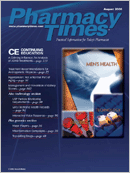Publication
Article
Pharmacy Times
How to Assess Drug Interaction Case Reports
Case reports represent a substantialportion of the literature ondrug interactions. Unfortunately,many of these reports are difficult toevaluate due to incomplete andsometimes confusing information. Wewill present some of the importantfactors to consider when assessing adrug interaction case report. Asusual, we will use "object drug" tosignify the drug affected by the interactionand "precipitant drug" for thedrug that causes the interaction.
Look at Previous Literature
One of the essential questions to askyourself is whether the interaction casereport makes sense, given the knowninteractive properties of the drugsinvolved. For example, an increased warfarinresponse after a patient is started ona potent CYP2C9 inhibitor such as sulfamethoxazoleis completely consistentwith what one would expect from combininga CYP2C9 substrate (warfarin) witha CYP2C9 inhibitor (sulfamethoxazole).
Alternatively, case reports where theoutcome is the opposite of what wouldbe expected, given the interactive properties(of either the object drug, precipitantdrug, or both drugs), is evidenceagainst a causal relationship. It does notcompletely eliminate the possibility of adrug interaction, however, becausesometimes drugs have differing interactiveproperties, depending on how theyare used (eg, short-term vs long-termuse, large vs small doses, etc).
Sometimes there is insufficient publishedinformation about the interactiveproperties of one or both drugs involvedin a case report. It would be wrong toassume, however, that just becauseinformation in the literature is lacking,the drugs do not have particular interactiveproperties that simply have not yetbeen detected. Diphenhydramine (Benadryl),for example, had been used fordecades before it was discovered that itis a relatively potent CYP2D6 inhibitor.
Look at Details of the Case
Time Course
As discussed in this column in theMarch 2006 issue (Disaster: Failing toConsider the Time Course), drug interactionstend to have a characteristic timecourse, depending largely on the mechanismof the interaction and the pharmacokineticsof the object drug. If the interactiontakes place much more rapidly ormuch more slowly than the expectedtime course, a causal relationship is lesslikely. Sometimes careful examination ofthe time course of drug interaction casereports can effectively rule out the druginteraction as a cause; for example,when the interaction occurs before theobject drug is given. (This sounds preposterous,but such errors happen moreoften than one might think.)
Stopping One or Both Drugs
If a drug interaction is suspected ofcausing drug toxicity in a patient, oftenboth interacting drugs are stopped simultaneouslyin order to reduce the toxicityas rapidly as possible. This is sensible andis usually in the best interests of thepatient, but does not provide much informationfor assessing a causal relationship.In those cases where it is safe tostop only the precipitant drug withoutchanging the dose of the object drug, onecan watch for the expected change in theresponse to the object drug. This is calleda positive dechallenge and is one of thekey elements in establishing a causal relationship.Then, if the precipitant drug isrestarted and the expected effect on theobject drug recurs, that is additional evidenceof causality. This is called a positiverechallenge. Case reports of drug interactionsrarely include a dechallenge andeven more rarely include a rechallenge.This is one of the primary reasons whycase reports are difficult to evaluate.
Alternative Explanations
It is important to look for other causesof the adverse outcome. Sometimes theyare obvious, such as an increase in thedose of the object drug at the same timethat the precipitant drug is started. Insome cases, however, it may be difficultto assess other causes, particularly in apatient with multiple fluctuating diseaseswho is having frequent changes in his orher drug regimen. Depending on the druginteraction under consideration, many alternativeexplanations need to be considered,such as chronic diseases,changes in disease states, infections,other interacting drugs, dietary factors,lack of adherence to drug regimens,pharmacogenetics, and many more.
Summary
Although assessing causality in druginteraction case reports is difficult, attentionto the guidelines discussed abovecan facilitate this process. Such guidelinescan be useful in assessing publishedcase reports, as well as cases thatone personally observes in practice.
Drs. Horn and Hansten are both professorsof pharmacy at the Universityof Washington School of Pharmacy.For an electronic version of this article,including references if any, visitwww.hanstenandhorn.com.
For a list of references, send a stamped, self-addressedenvelope to: References Department,Attn. A. Rybovic, Pharmacy Times, AscendMedia Healthcare, 103 College Road East,Princeton, NJ 08540; or send an emailrequest to: [email protected]

Newsletter
Stay informed on drug updates, treatment guidelines, and pharmacy practice trends—subscribe to Pharmacy Times for weekly clinical insights.






